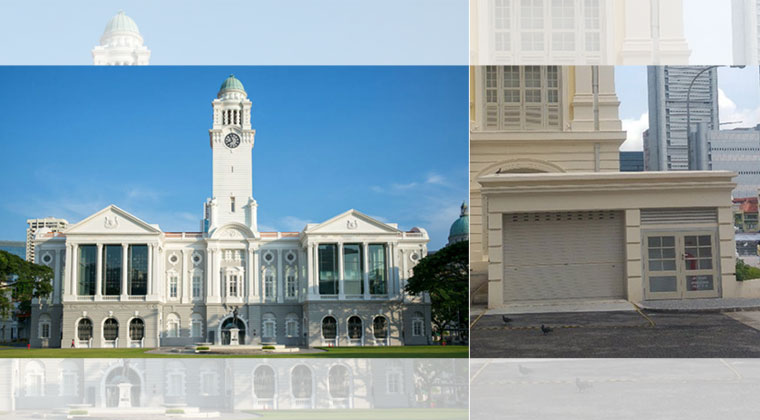A bin centre that cost the National Arts Council (NAC) S$880,000 in total to build, was recently flagged in the Auditor-General's Office report for Financial Year 2015/16.
The consultation fee alone, which the AGO said was “exceptionally high”, was S$410,000.
This raised the collective eyebrow of the general public.
The NAC has responded by saying that they accept and acknowledge that the cost assessment for the building of the bin centre outside the Asian Civilisations Museum (ACM) should have been more robust.
The NAC's 468-word response has been published on Factually, a government website, in typical government speak.
To do them a favour, here is the translation of NAC's response into 133 words of English:
We could have done better with our costings.
But the public has misunderstood. This is no ordinary bin centre. It is a centralised bin centre.
It is located in the Civic District, the birthplace of modern Singapore.
So this is about redevelopment.
Previously, various venues had their own bin centres.
But we took the redevelopment as an opportunity to create a centralised version to serve Victoria Theatre and Victoria Concert Hall (VTVCH), Asian Civilisations Museum (ACM) and Old Parliament House.
We built it outside ACM, above its basement, but this made the project difficult to execute and required consultancy expertise.
Once done, all the stakeholders' needs were met, the smell was contained and pedestrians could walk around freely.
The bin centre's construction cost was less than 1 percent of the development cost for VTVCH.
Here is the original:
With reference to the report of the Auditor-General for the Financial Year 2015/16, we accept and acknowledge that the cost assessment for the building of the National Arts Council (NAC) bin centre should have been more robust. Relevant processes will be put in place to ensure that the norm for cost assessment of consultancy fees will be adopted for future development projects.
Why a centralised bin centre?
There could be some misunderstanding about the reasons for building the bin centre. It was not a standalone project; but part of redevelopment for the Civic District which is an important cultural and heritage area for Singapore.
In the past, Victoria Theatre and Victoria Concert Hall (VTVCH), Asian Civilisations Museum (ACM) and Old Parliament House had their own bin centres.
However, with the redevelopment of the District, there was an opportunity to build a centralised refuse collection centre to serve ACM, VTVCH and Old Parliament House. This would allow for improved operational processes and enhance the aesthetics of the area.
A suitable location was eventually identified at ACM’s existing outhouse, above its basement, and the construction cost was less than 1% of the development cost for VTVCH.
Why was the project complex and complicated?
This was not a simple bin centre to build. There were many considerations and technical challenges, including the following:
a) structural and reinforcement works as it was above the ACM basement;
b) mechanical and electrical services;
c) diversion of existing underground services;
d) consideration of ventilation to prevent foul smell from escaping from the bin centre;
e) sensitivity to ACM offices which are right next to the bin centre;
f) façade design as the aesthetics of the historic area needed to be preserved;
g) study of traffic flow, e.g., the impact on the ACM unloading/loading bay.
Why were consultancy services necessary?
Consultancy services were necessary because of the complexity of the project. The consultancy services included a feasibility study taking into account the various requirements of three separate institutions — ACM, VTVCH and Old Parliament House. The needs of each stakeholder had to be met while providing a holistic solution for the whole precinct.
The consultancy services also included technical study, design proposal, design documentation, tender and contract administration, compliance with all regulatory requirements, etc.
What has changed for the Civic District?
The Civic District is the historical birthplace of modern Singapore. With the redevelopment, Singaporeans now enjoy the new improvements to the District. There are more green spaces, pedestrian walkways, waterfront steps and even phone-charging benches.
Traffic flow has also improved, and pedestrians can now walk easily between ACM, VTVCH, National Gallery Singapore, Empress Place and Esplanade Park. You can also take a walk along the waterfront plazas in front of the ACM, and at Queen Elizabeth Walk, there are steps that lead to the water's edge.
Top photo via Factually, Twitter
If you like what you read, follow us on Facebook and Twitter to get the latest updates.
If you like what you read, follow us on Facebook, Instagram, Twitter and Telegram to get the latest updates.
